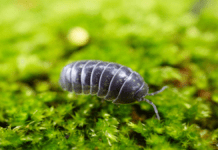If you started to read this article, I know you are a person who likes to have a beautiful garden. There are lots of beautiful plants in the world. But all of them are not suitable to plant in your garden. Some of them are toxic and some of them may not survive because of climate. So today I’m going to show you some interesting plants which can be easily added to your garden. Other than that I’m also going to give you basic instructions to take care of them. So without extra explanations, let’s look at them!
# Namaqua Century Plant

This is a deciduous geophyte that grows around 50 centimeters in height. It is like a primitive plant which comes from a large bulb that sizes roughly two-thirds of the plant. These egg-shaped bulbs are surrounded by grey or brown papery tunics. Sometimes the largest bulbs are older than hundred years. It has strap-shaped leaves of up to 20 which are spreading like a fan. Those leaves are arranged in two opposite rows. Leaf margins of those leaves vary from wavy to straight.
Besides its common name, it has another name as ‘Cape Century Plant’. The scientific name of this plant is ‘Boophone haemanthoides’. This Namaqua Century is native to the Cape provinces of South Africa and Namibia. When considering the flowering of this plant, this has flowers during the summer after the leaves die. A flower head rises from the center of the bulb and it contains lots of white small flowers.

This unusual plant can be planted indoor and it will be a great house plant. If you are willing to have this plant in your home, there are several things you should consider. The first thing is if you are going to plant it outdoor, it will not survive in a high rainfall area. So it is good to grow indoors. And also this plant requires high light so try to open it to full sun during the daytime.
Another main thing is soil. It is necessary to have well drained sandy soil for the growth of the bulbs. And those bulbs also require good space to grow. So always use a pot which has at least 40 centimeters deep. When planting the bulb make sure to remain at least two of third of that bulb.
# Octopus Agave

Octopus Agave is an evergreen succulent plant that is native to Mexico. This is also known as Agave Vilmoriniana and Agave mayoensis. But most of the people call it from the common name Octopus Agave. This plant got this name because of its long, slender green leaves that arch in a way like octopus tentacles. This unusual looking succulent usually grows 3-4 feet in height and 5-6 feet in width.
Octopus Agave produces flowers only one time during their lifetime. The plant becomes mature in about 10 years and then it produces a flower stalk which is 10-20 feet high. It is covered with fragrant, attractive golden-yellow flowers. This total flowering process usually takes an entire season.
Like a regular succulent, this plant does not require regular watering. But it is better to water this regularly during its young age. When it is established, let the soil dry completely and water it deeply during the summer. But never water it during winter. And also this Octopus Agave prefers direct sunlight. But if you are going to plant it in a shady place it is also okay.

The best soil for this plant is sandy or gravelly soil which provides good drainage. Mix the soil with compost and then establish the plant. And also this plant does not require regular maintenance. When there are damaged or old leaves just trim them off.
I think you may like to know how to propagate this Octopus Agave. Here is the way. The simplest and easiest way is to propagate this from plantlets which grow in the flower spike. When a mature plant finished its blooming, each blossom on the strike turns into a tiny plantlet. When the blooming has completed wait till those plantlets get two sets of leaves. Then remove them from the spike and harvest them. If you have an outdoor with suitable weather, you can directly plant them in your garden. Otherwise leave them in a suitable place for several days, allowing them to grow naturally.
Some people think Octopus Agave is a toxic plant. But actually, it is not a toxic plant but its sap can be sometimes irritating to sensitive skin.
# Variegated Spiral Ginger

This is a plant which originated from South Africa but now a days very popular in Florida and Hawaii. The scientific name of this is ‘Costus arabicus’ and they usually grow up to 3 meters in height. And also they twisted themselves and this is a very eye catching and wonderful plant and you can surely brighten up your home by having this plant.
This plant needs a bright spot but with indirect sunlight. Direct sunlight is harmful to this and it can quickly dry out the leaves of this plant. This also likes warm temperatures and grows well in loose well-drained soil. But never let the plant in very wet soil. You can easily propagate this plant by cutting a stem and plant after dipping it in rooting hormone.
# Magic Dogwood

Magic Dogwood is a very rare tree that has beautiful and mysterious flowers. It is the Mexican version of the American Dogwood tree. It has white flowers that look like Chinese lanterns and these trees fill with thousands of flowers each spring. The white flower brackets of this tree are fused together at the end and create an unusual shape like a cage. The amazing thing is no two flowers are exactly alike same as snowflakes.
The scientific name of this plant is ‘Cornus florida urbiniana’. The origin of this plant is mountain forests in Eastern Mexico. The climate in there is spring-like all the year round and these trees grow about 20 feet tall in there. But you can keep these trees shorter by planting them in pots. And also this Magic Dogwood has slightly blue leaves than other dogwood species. As these are growing in shady forests, try to give them some protection from the strong light of the sun.



















